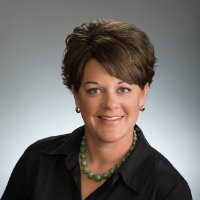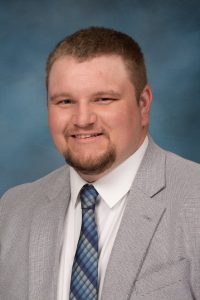
Herbicide resistance: What it looks like in Kansas fields—and what to do next
By Lonnie Mengarelli Ag and Natural Resources Agent – Southwind District
Herbicide resistance is one of the most serious and persistent challenges facing Kansas agriculture and crop production worldwide. Since the first documented case of resistance—wild carrot surviving 2,4-D in 1957—the problem has expanded dramatically. Today, 273 weed species worldwide have evolved resistance to 21 different herbicide modes of action, including many species found right here in Kansas.
When weed control fails, it is critical to determine why. If herbicide resistance is the cause, management programs must be adjusted quickly and decisively. Resistance develops through repeated use of herbicides with the same or similar mode of action at the same site over several years. This repeated selection pressure favors survival of resistant individuals within what was once a susceptible population. Timely diagnosis, regular field scouting, and early detection are essential—not only to reduce yield losses but also to slow the spread of resistance across fields and regions. According to the Weed Science Society of America and Take Action on Weeds, there are three broad field indicators that may signal herbicide resistance.
Species-specific survival occurs when a particular weed survives an herbicide application while nearby plants of the same species are controlled.
Spreading patches appear as clusters of surviving weeds that often expand in following seasons through seed movement by tillage, harvest equipment, or wind.
Mixed injury responses happen when a single weed species shows a range of reactions—some plants dead, others injured, and some completely healthy. This uneven response suggests genetic diversity that can drive further resistance evolution.
These warning signs should raise concern, but it is important to remember that not all herbicide failures are due to resistance. In fact, roughly nine out of ten failures are caused by other factors such as unfavorable weather, incorrect application rates, poor spray coverage, improper timing, large weed size, soil moisture conditions, skips, or equipment problems. Producers typically rely on pre-emergence (PRE), post-emergence (POST), or residual herbicides—often in combination—for broad-spectrum weed control. Knowing how these products should perform is key to identifying potential resistance. POST herbicides normally produce visible injury symptoms such as yellowing, burning, stunting, drooping, or plant death. Residual herbicides, by contrast, should suppress new weed flushes for weeks after application. When weeds continue to emerge or survive despite proper application and favorable conditions, resistance should be suspected and investigated. Field observations provide valuable clues. For example, kochia surviving ALS inhibitors without any stunting, waterhemp emerging weeks after a residual Group 15 herbicide under moist conditions, or horseweed showing no injury following a glyphosate application are all documented red flags.
Field patterns can also hint at the type of resistance involved. Target site resistance often produces uniform, healthy survivors with little or no visible injury. Non-target site resistance tends to show patchy survival and partial injury and is generally more difficult to manage because it may confer resistance across multiple herbicide groups. While laboratory confirmation is needed for certainty, these field-level observations help guide immediate management decisions. If herbicide resistance is suspected, quick action is essential. Post-spray scouting should occur soon after application to assess weed responses. Survivors should be compared across species and field areas. When possible, re-sprays should include multiple effective herbicide modes of action. However, if weeds are too large, a second application may fail, and mechanical control such as cultivation or hand removal may be necessary. Scouting should continue through harvest to identify escapes and inform future crop and herbicide rotations. Producers are encouraged to contact their local extension agent, input supplier, commercial applicator, or weed science specialist if resistance is suspected.
Herbicide resistance continues to threaten effective weed control in Kansas and beyond. While herbicide failure is a major warning sign, other agronomic and environmental causes must be ruled out first. Understanding herbicide modes of action and recognizing when weeds do not respond as expected are critical steps in early detection. Watch closely for dead plants next to live ones, increasing weed populations that were once controlled, and patches or trails of survivors after application. Early detection and rapid response remain the most powerful tools to prevent the spread of herbicide resistance and protect long-term crop productivity.
Lonnie Mengarelli is a K-State Research and Extension Agriculture agent assigned to Southwind District. He may be reached at [email protected] or 620-223-3720
References
Switzer, C. M. 1957. The existence of 2,4-D–resistant strains of wild carrot. Proc. Northeast. Weed Control Conference. 11:315-318.
Weed Science Society of America (WSSA), & Take Action on Weeds. (2015). Field identification and control of suspected herbicide-resistant weeds. United Soybean Board. Retrieved from https://iwilltakeaction.com/uploads/files/Field-Identification-of-Suspected-Herbicide-Resistant-Weeds.pdf
Yasir Parrey, Assistant Scientist, Weed Extension Lab
[email protected]
Sarah Lancaster, Extension Weed Management Specialist
[email protected]
Patrick Geier, Weed Scientist, Garden City
[email protected]









